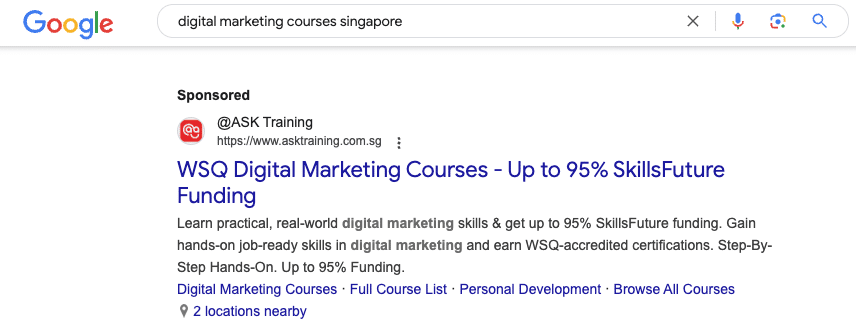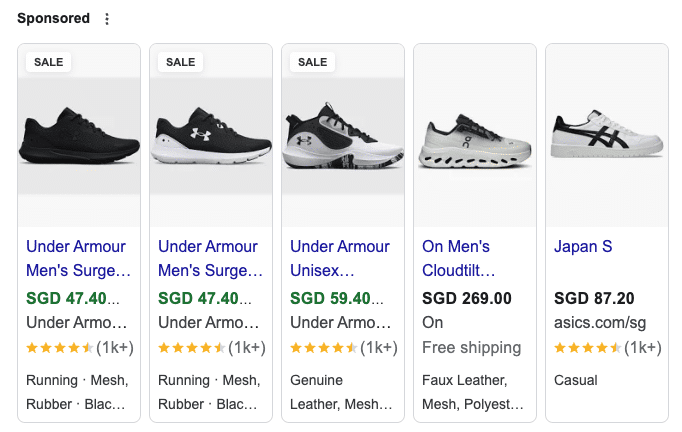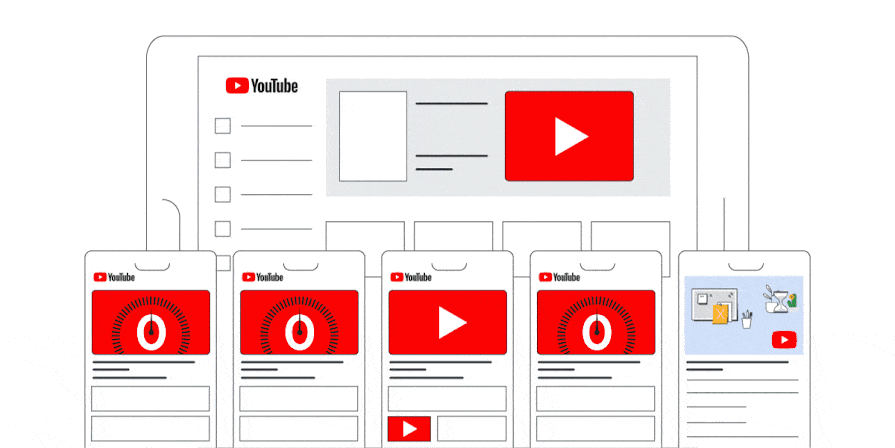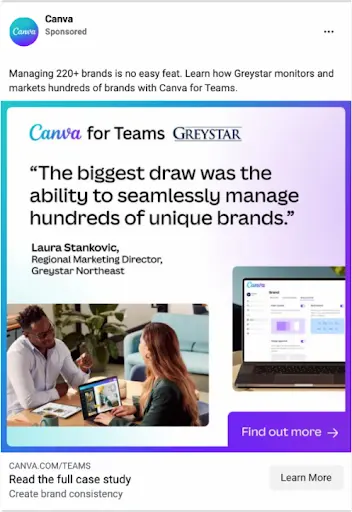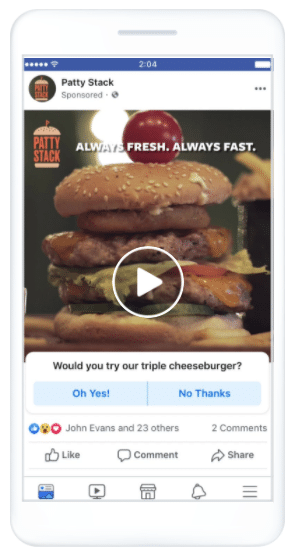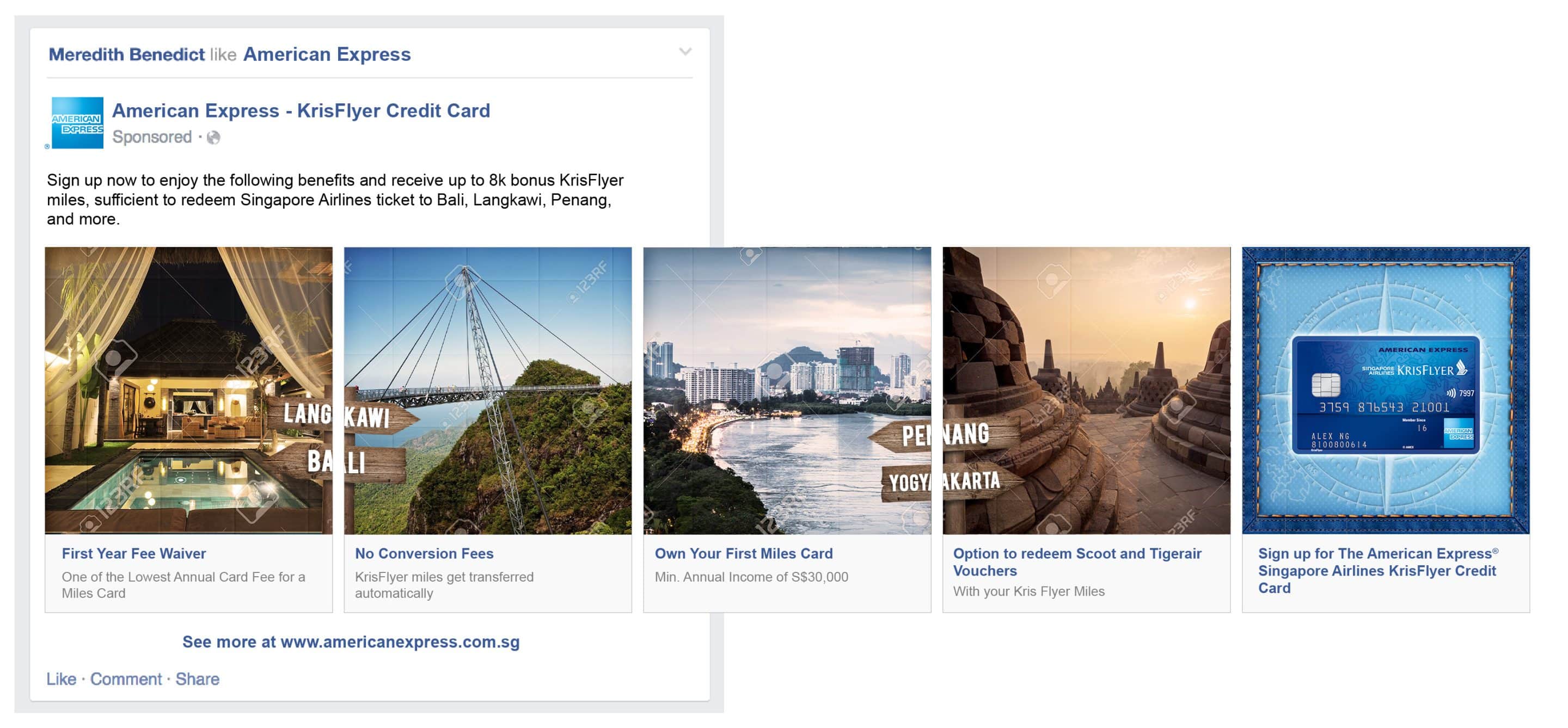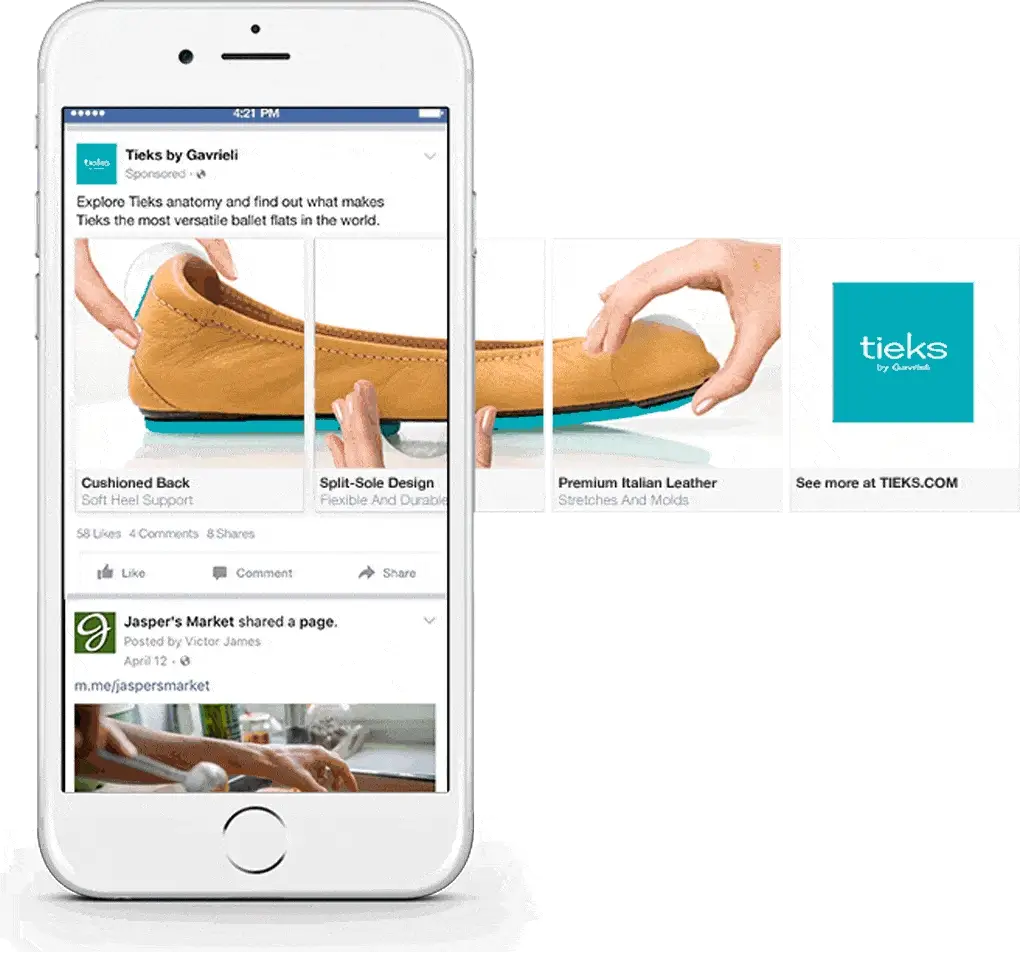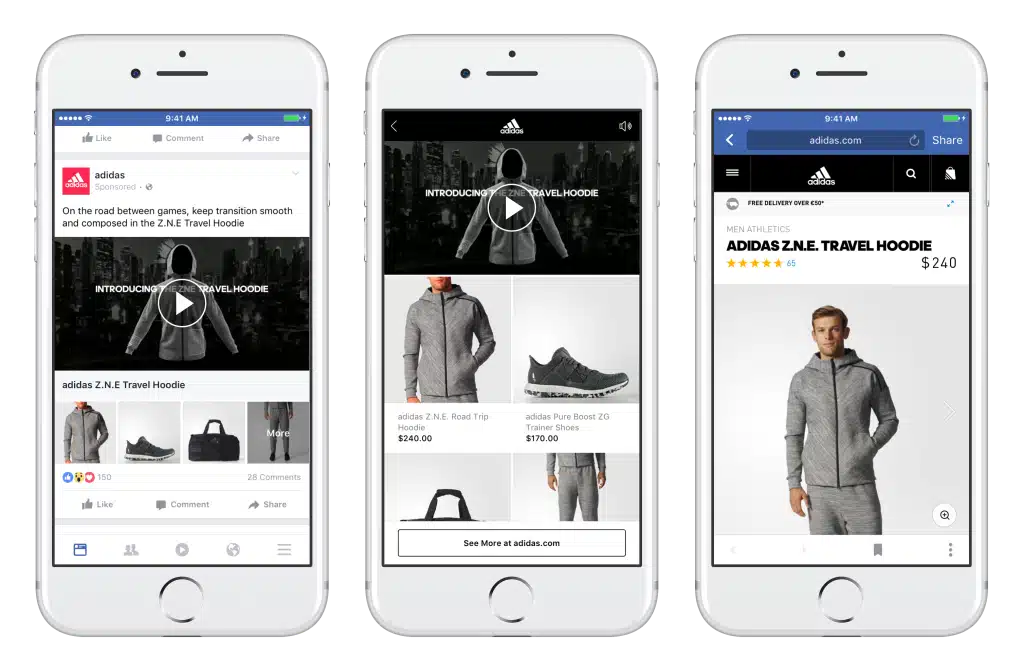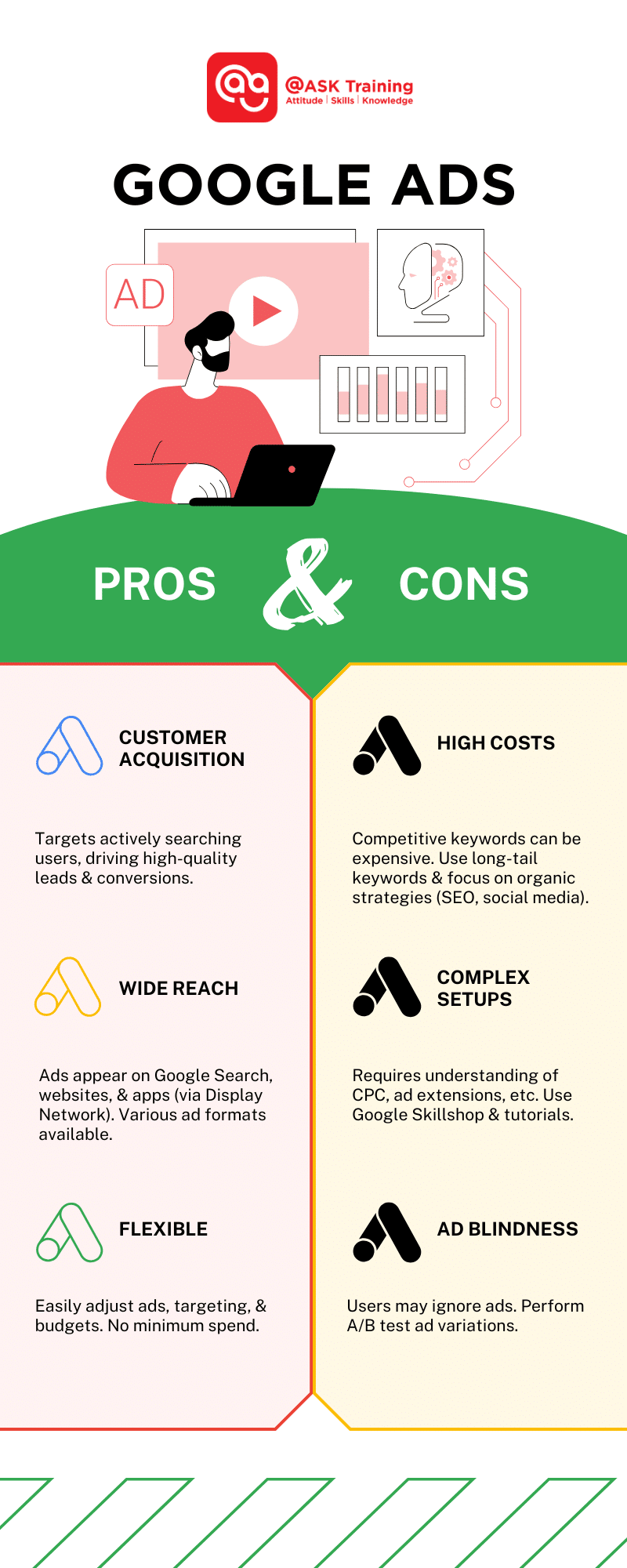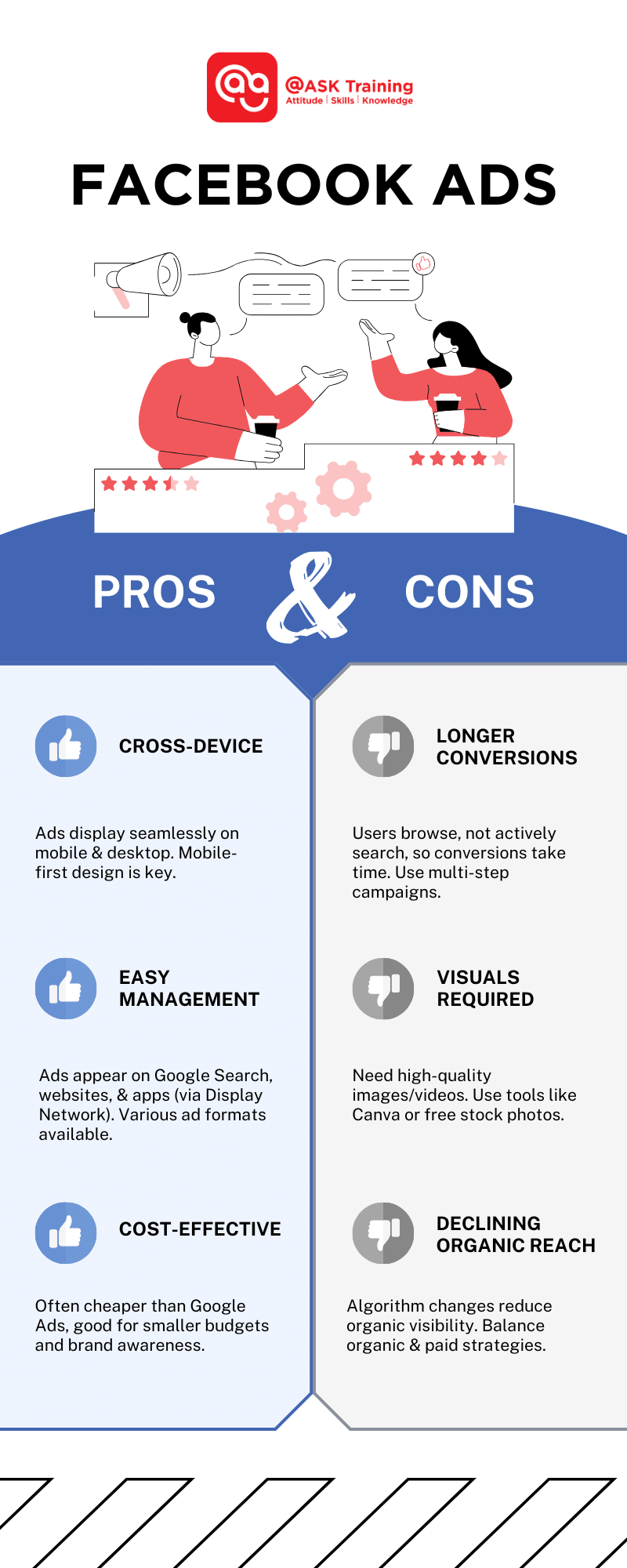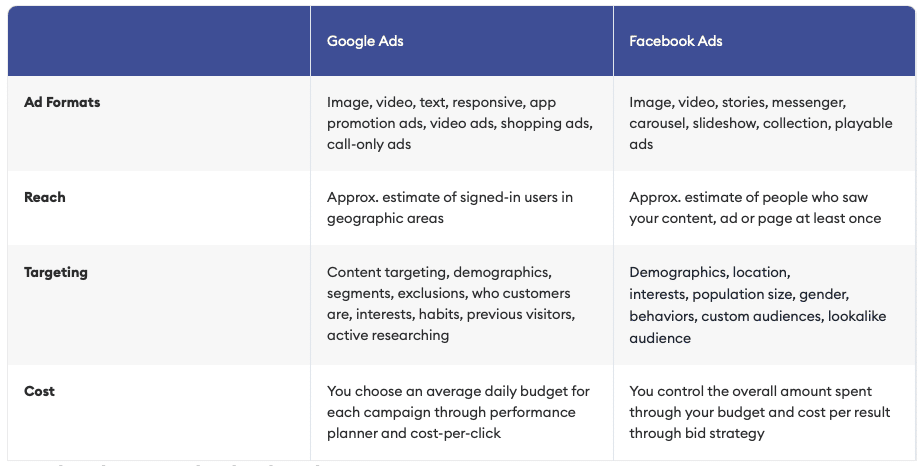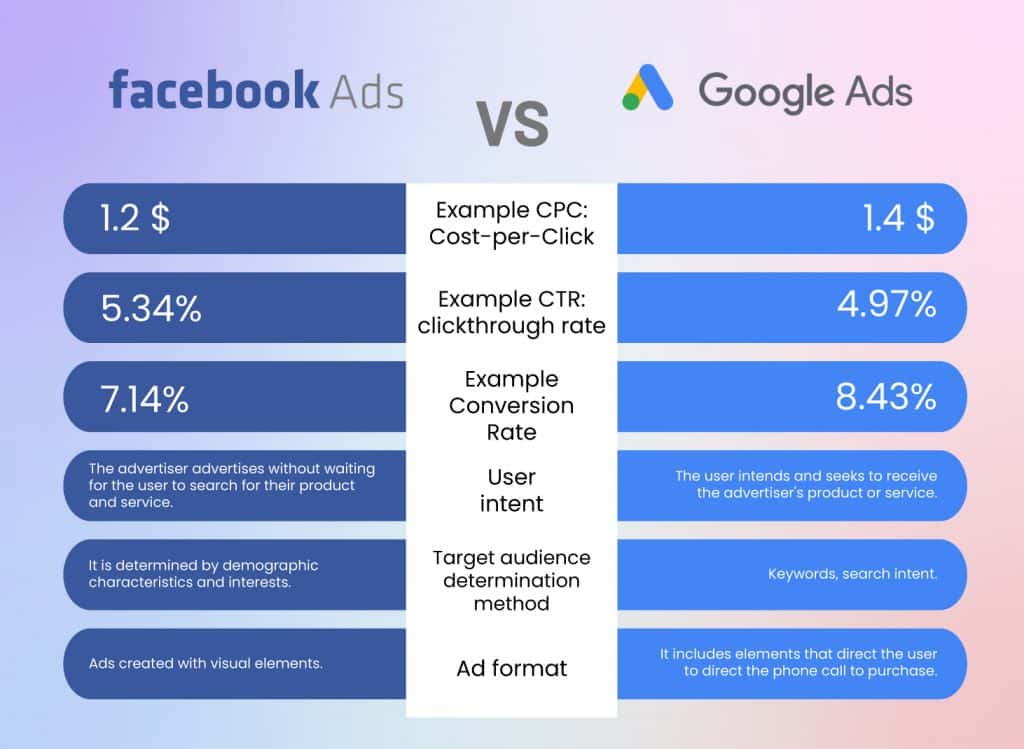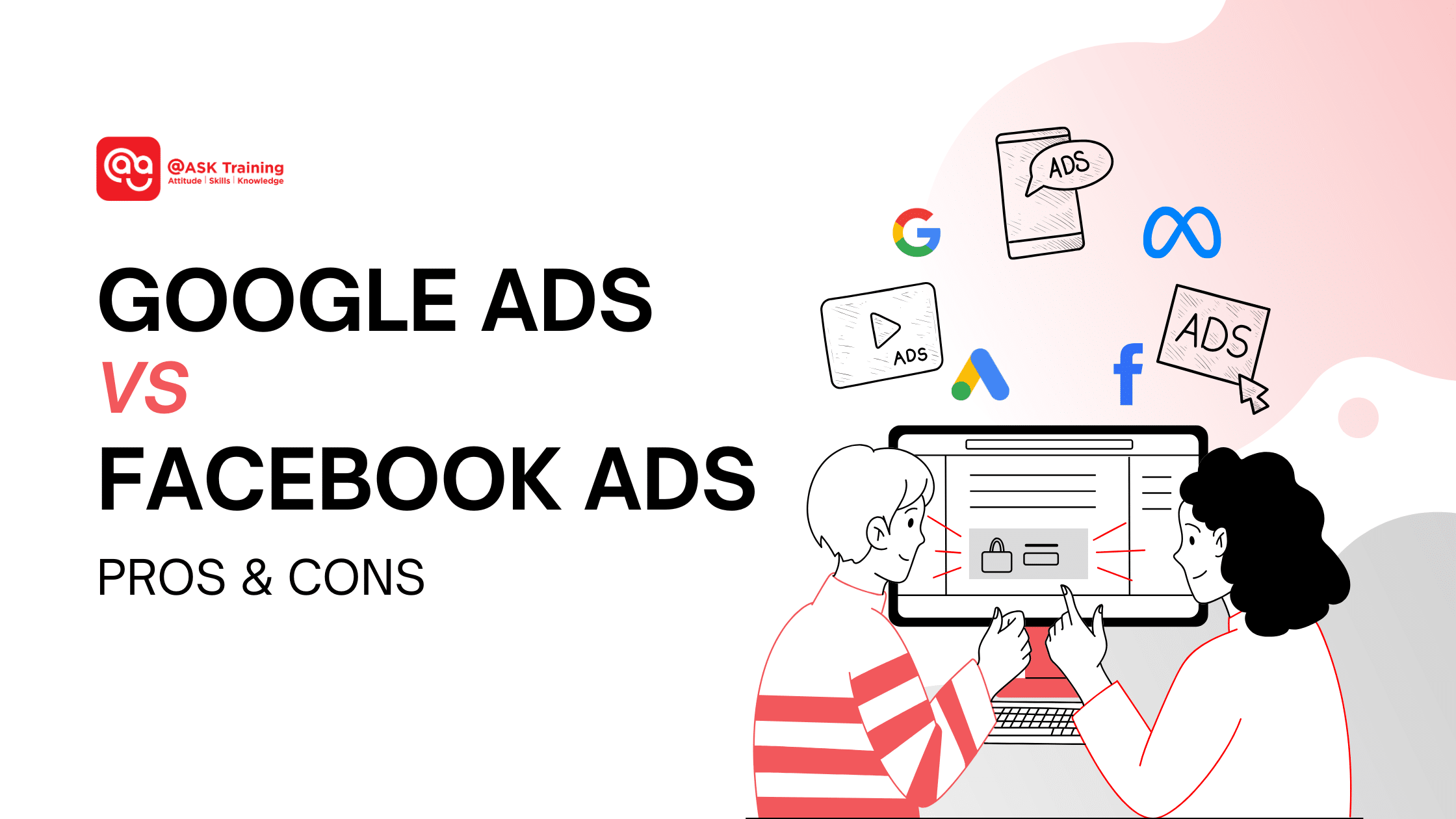
Today, digital advertising has become an essential tool for businesses looking to expand their reach and attract new customers.
In Singapore alone, the digital advertising market is expected to grow steadily, reaching US$2.31 billion by 2028. By 2025, search advertising will make up nearly half of all digital ad revenue in the Asia-Pacific region, driven by platforms like Google and retail media networks. This highlights the growing importance of digital ads in connecting businesses with their audiences.
Businesses like e-commerce, retail, food and beverage, healthcare, real estate, technology, and education are significant sectors leveraging digital advertising. This kind of digital marketing offers a versatile, flexible and powerful way to connect with potential customers.
In this arena, two of the most prominent platforms are Google Ads and Facebook Ads. These platforms have revolutionised and changed forever the way advertising is done. Each platform offers unique features and capabilities that are tailored to meet different marketing goals.
Anyone engaged in digital marketing or thinking about launching an online business must first understand the complexity of Google Ads and Facebook Ads.
This article will provide an in-depth Google Ads vs Facebook Ads comparison. We will explore their key features, advantages, and limitations while pointing you to the platform that suits your digital advertising needs. By the end of this article, you will have a clearer understanding of how to use these platforms and how to maximise your marketing success.
Overview of Google Ads vs Facebook Ads
To effectively navigate the digital advertising landscape, it’s essential to understand the key differences between Google Ads and Facebook Ads
Google Ads
As the undisputed giant of the internet, Google offers Google Ads, a paid search tool that displays advertisements to users based on their search queries. When users type specific keywords or phrases into Google’s search engine, relevant ads are shown on the search engine results pages (SERPs).
Google Ads also offers a variety of ad types, including:
- Search Ads: Appear at the top or bottom of search results pages
- Display Ads: Showcased on websites within the Google Display Network
- Shopping Ads: Feature product images and prices directly in the search results
- Video Ads: Displayed on YouTube and other video platforms.
Facebook Ads
Facebook, with over two billion monthly users, offers Facebook Ads—a paid social media advertising platform that’s great for targeting audiences. Advertisers can reach people based on their interests, demographics, and behaviours.
Facebook ads deliver visually engaging formats, appearing in locations like news feeds, stories, and sidebars. The ads showcase products or services beyond Facebook, reaching audiences across Instagram, Messenger, and the Audience Network, ensuring smooth integration across devices and platforms.
Key Differences Between Google Ads & Facebook Ads
User Intent
Google Ads
People using Google are actively seeking specific information, products, or services. Google Ads can deliver highly relevant ads that align with the user’s search queries, thus increasing the chances of conversions.
This makes Google Ads an effective tool for targeting people who are closer to making a purchase decision.
Facebook Ads
Unlike Google, Facebook users mainly browse content on their social media feeds for entertainment or connection rather than to look for specific products or services. This makes Facebook Ads more appropriate for creating interest and building brand awareness.
Here is where you can take advantage of Facebook’s advanced targeting features based on user interests, demographics, and behaviours to reach potential customers and pique their interest over time.
This approach helps nurture potential customers and guide them along the purchasing journey.
Ad Formats
Google Ads
Google Ads offers a mix of text-based and visual ad formats to cater to various marketing needs. This includes:
- Search Ads: Consists mainly of text-based advertisements displayed on Google’s SERPs, targeting users based on specific keywords.
Example of Search Ad
In addition to text ads, Google Ads offer various visual formats:
- Display Ads: Appear on websites within the Google Display Network which feature static or interactive graphics to boost brand awareness.
Example of Display Ad
- Shopping Ads: Ads that provide product images, prices, and other information appear directly in search results and are ideal for e-commerce businesses.
Shopping Ad Example
- Video Ads: Displayed on YouTube and other video platforms and can be very captivating, making use of the power of video content to capture users’ attention.
Video Ads Example
(Source: Google Support)
Facebook Ads
Facebook Ads are more visual, capitalising on the platform’s social dynamics to engage users. There are a variety of ad formats to attract attention and drive engagement, including:
- Image Ads: Simple yet impactful, these ads use high-quality visuals and engaging text to attract user interest.
Image Ad Example
- Video Ads: Facebook’s auto-play feature allows video ads to quickly capture users’ attention as they browse through their feeds.
Video Ad Example
- Carousel Ads: Up to ten pictures or videos, each with a link, in a single ad. Carousel ads are ideal for showcasing a range of products or telling a story.
Carousel Ad Example
- Slideshow Ads: Combining multiple images or short video clips, these ads are fast-loading and great for engaging users with slower internet connections.
Slideshow Ad Example
- Collection Ads: Combining key videos or image with clickable images, offering a seamless shopping experience directly within Facebook
Collection Ad Example
By understanding the ad formats of both platforms, businesses can choose the most optimal methods to reach their customers and achieve their marketing goals.
Targeting Options
Google Ads
Google Ads focus mainly on keyword and phrase targeting. This allows businesses to connect with users actively searching for specific products or services. Additional options such as location, device, and audience retargeting, enhance accuracy for reaching users with high intent.
Facebook Ads
On the other hand, Facebook Ads make use of demographics and interest-based targeting options, including age, gender, location, interests, behaviours, and more.
This allows advertisers to reach specific audiences who may not be actively looking for them, making Facebook Ads a great choice for creating interest, increasing exposure, and gradually nurturing prospective customers over time.
By understanding these targeting options, businesses can use each platform to effectively reach their desired audience and achieve their marketing objectives.
After exploring in detail the main differences between Google Ads and Facebook Ads, let’s compare further in the next section on the advantages and disadvantages of each platform.
Advantages and Disadvantages of Google Ads
Like any advertising platform, Google Ads comes with its strengths and limitations. Understanding these can help you determine whether Google Ads is the right fit for your marketing strategy.
Google Ads Benefits
Effective for Acquiring Customers:
- Google Ads is particularly effective for targeting users who are actively looking for goods, services, or information.
- A user searching “best laptops under $1,000” is likely ready to make a purchase.” This makes it ideal for generating high-quality leads and boosting conversions.
Extensive Reach:
- Thanks to Google Display Network, potential customers can see your ads not only on Google Search but also across a variety of websites and apps, ensuring broad exposure.
- A variety of ad formats allows you to tailor your campaigns based on your marketing goals.
Flexible Campaign Management:
- You can easily modify ad copy, targeting settings, and budgets at any time to achieve your objectives.
- Google Ads has no minimum spending requirement, making it accessible for businesses of all sizes. You can start small, test your strategies, and scale up as you learn.
Google Ads Disadvantages
High Costs for Competitive Keywords:
- One key drawback of Google Ads is the cost, particularly for popular or generic keywords. Popular keywords like “digital marketing courses” or “education” can be expensive, especially for those working with tight budgets.
- Instead of paying high costs for competitive keywords, focus on specific long-tail keywords, which are less expensive and highly targeted.
- Additionally, creating high-quality content can boost organic search rankings.
- Enhancing your website’s user experience and leveraging social media for organic reach are also cost-effective strategies.
Difficult Setup:
- Setting up campaigns requires understanding terms like CPC (Cost-Per-click), ad extensions, and keyword match types.
- While it can be challenging, free sources like Google Skillshop or guided tutorials can help you gain confidence.
Ad Blindness:
Some users may overlook or skip paid ads, reducing their impact. To counter ad blindness, you can use A/B testing to determine which ad variations or elements work best.
Advantages and Disadvantages of Facebook Ads
Facebook Ads can be a powerful tool for marketers, but like any platform, they have their own set of advantages and limitations.
Facebook Ads Advantages
Cross-Device Visibility
- Facebook Ads are optimised to display seamlessly across devices, whether your audience is on mobile or desktop.
- It is also particularly important for marketers to design campaigns with mobile-first users in mind as mobile usage continues to grow.
- Designing campaigns with a mobile-first approach is crucial for reaching your target audience effectively as mobile usage continues to grow.
User-Friendly Campaign Management
- Facebook’s Ad Manager provides intuitive controls that make it easy for you to create and manage campaigns.
- You can utilise features like automated placements and advanced audience targeting letting you reach specific demographics, interests, and behaviours with precision.
- Tools such as Brand Safety options and Block Lists ensure your ads appear in suitable contexts and avoid inappropriate placements.
Cost-Effective
- Facebook Ads are often less expensive than Google Ads, making them a desirable choice for businesses with tighter budgets or individuals concentrating on brand-building awareness.
- For example, a mid-career professional running ads for a niche business can stretch their budget by targeting specific audiences.
Facebook Ads Disadvantages
Longer Conversion Time
- Unlike search platforms, Facebook users typically browse content rather than actively seek solutions, so converting them into customers may take more time and effort.
- Consider creating multi-step campaigns to nurture potential customers through the sales funnel to help improve conversion rates over time.
Appealing Creative Visuals
- The need for eye-catching images and videos is essential for grabbing users’ attention, which means businesses need to invest in high-quality, engaging creatives to ensure the success of their campaigns.
- If you are a beginner, you can start with accessible tools like Canva or free stock images to create visually appealing ads without a big budget.
Decline in Organic Reach
- Facebook algorithm modifications may result in a decrease in the organic reach of the company pages, which makes it more difficult for businesses to engage with their audience without spending money on paid advertising.
- To maintain visibility, balance your strategies between organic content and paid campaigns for best results.
By understanding the strengths and weaknesses of Facebook Ads, you can align your campaigns with the platform’s features, building both effective strategies and valuable marketing skills.
To provide a clearer picture, here’s a summary of Google Ads vs Facebook Ads comparison:
(Source: Forbes)
Cost and ROI Comparison
When evaluating advertising platforms, comparing cost and return on investment (ROI) is essential for optimising your marketing budget.
Cost
Google Ads
Google Ads typically involve higher costs, with higher cost-per-click (CPC) and cost-per-action (CPA). This is because Google Ads targets users who are actively searching for products or services making them more likely to convert quickly. Google Ads are especially useful for companies trying to reach leads who are ready to purchase goods or services.
Example:
Imagine a local Singaporean electronics store launching a Google Ads campaign with keywords like “best noise-cancelling headphones” or “buy 4K TV Singapore.”
Users searching these terms are already in the decision-making phase and more likely to make a purchase. While these keywords may have higher CPCs, the likelihood of converting these clicks into sales justifies the investment, especially for businesses aiming for immediate returns.
Facebook Ads
Facebook Ads, on the other hand, have a lower cost-per-click (CPC), making them a more cost-effective option for reaching a wide audience. However, since Facebook users usually browse content rather than actively search for solutions, converting these leads into paying customers may require more time and nurturing.
Example:
A fashion retailer in Singapore is promoting their latest Christmas collection through Facebook ads with a lower cost-per-click (CPC). They create eye-catching carousel advertisements showcasing a variety of their products and target consumers based on interests like “fashion,” “shopping,” and “trendy clothing.”
The boutique focuses on increasing brand awareness and attracting new customers with stylish images and related content. These ads help create brand awareness and encourage eventual traffic and sales from interested customers.
Return on Investment (ROI)
The return on investment (ROI) for both Google Ads and Facebook Ads depends largely on how well your campaigns are designed to meet your goals and how well the ads are targeted to your audience.
Both platforms are powerful but work best at different stages of the customer journey.
Google Ads
Google Ads delivers quick results by targeting people who are actively searching for products or services. By focusing on high-intent keywords, you can capture users ready to make a purchase, leading to faster conversions and high ROI in the short term.
This makes Google Ads ideal for campaigns focused on immediate sales or lead generation.
Facebook Ads
In contrast, Facebook Ads shine when it comes to building brand awareness and nurturing leads. With its advanced targeting options and visually engaging ad formats, Facebook helps you connect with users who may not be actively searching but are open to discovering your brand.
Over time, this interest can convert into loyal customers, offering ROI for campaigns that focus on long-term growth.
For the best results, combine both platforms in your strategy and fine-tune your targeting and content regularly to get the most out of your campaigns.
Example:
Imagine a digital marketing agency in Singapore running Google Ads with keywords like “digital marketing services Singapore.” These ads attract users who are actively looking for such services, leading to quick conversions and immediate ROI.
At the same time, the same agency uses Facebook Ads to feature engaging videos and client testimonials. By targeting business owners and marketing managers. These ads focus on building brand awareness and establishing trust.
Over time, this strategy nurtures leads, turning initial interest into long-term conversions and sustained ROI as these prospects become loyal clients.
To provide you with a clearer understanding of the cost and ROI comparison, here’s a summary:
(Source: Wask.Co)
By understanding these dynamics, you can make more informed decisions as to which platform is best for you and your organisation’s advertising goals and budget.
Best Strategies of Using Google Ads and Facebook Ads Together
Understanding the strengths of both Google Ads and Facebook Ads can help develop a well-balanced marketing strategy.
Combining Google Ads and Facebook Ads can be powerful as they target different stages of the customer journey. Google Ads captures high-intent prospects, while Facebook Ads engage potential customers at the awareness and consideration stages, providing a seamless guide through the buyer’s journey.”
Real-World Example:
Baked Delights, a local bakery in Singapore, is looking to increase its customer base and drive more sales. The bakery decides to use both Facebook Ads and Google Ads to create a comprehensive marketing strategy.
Step 1: Build Awareness with Facebook Ads
The bakery aims to build awareness and excitement about its delectable offerings, attracting potential customers who may not have heard of the bakery before.
The bakery runs a Facebook Ads campaign showcasing its delicious range of pastries, cakes, and bread. They create visually appealing carousel ads featuring high-quality images of their baked goods, targeting users based on interests like “baking,” “desserts,” and “food lovers.”
Step 2: Follow Up with Google Ads
After generating initial interest with Facebook Ads, the bakery uses Google Ads to target users who are looking for baked goods.
They run search advertising with keywords such as “best bakery in Singapore,” “order fresh bread Singapore,” and “buy birthday cakes online Singapore.” These ads appear when users search for relevant terms, ensuring that the bakery reaches those who are actively looking to buy baked goods.
Step 3: Re-Engage with Retargeting
The aim is to convert users who visited the specific product pages into buying customers.
The bakery also uses retargeting ads through Google Ads to re-engage users who visited their website but did not make a purchase. When these individuals browse the internet, they see ads that remind them of the delicious baked goods they viewed, enticing them to return and complete their purchase.
By combining Facebook Ads for initial awareness and Google Ads for targeting potential shoppers, the bakery develops a plan that maximises reach and conversion. The buyer’s journey – from discovering the bakery’s items on social media to purchasing after searching online – is a successful strategy.
This approach takes advantage of the benefits of both platforms, thus increasing traffic, brand exposure, and revenue for the bakery.
Wrapping Up
Google Ads and Facebook Ads each have unique strengths that address different business marketing needs.
Google Ads is great for targeting potential customers through keyword searches, making it ideal for generating conversions. Its extensive reach goes beyond search results to websites and apps through the Display Network.
Facebook Ads, on the other hand, provides advanced targeting based on demographics, interests, and behaviours, making it perfect for building brand awareness and engaging interested shoppers through visually appealing content.
The choice between Google Ads and Facebook Ads depends on your business goals, budget, and target audience. If you aim to capture customers who are ready to buy, Google Ads might be the best choice. However, if you want to generate interest and nurture leads over time, Facebook Ads may be more effective.
For the best results, consider using both platforms together. Using the strengths of each, you can develop a comprehensive marketing strategy that maximises reach and conversion while targeting customers at different stages of their buying journey.
Combining these powerful technologies can help your business reach its advertising and marketing goals more effectively, expanding your audience and driving more conversions.
Are You Ready to Take The Next Step?
Mastering these platforms is a crucial step in building your digital marketing expertise. @ASK Training can be your ally in this journey! We offer Google Ads and Online Advertising courses to help you gain the skills you need, learn from industry experts, and get hands-on experience to create effective, results-driven campaigns.
Some of our popular online advertising courses include:
Get in touch with us today to learn more about available funding and course details!
Start transforming your marketing skills into a career advantage!
Related Courses
- Google Ads and Online Ads Courses
- WSQ Digital Advertising Course
- WSQ Advanced Digital Advertising Course
◆◆◆

